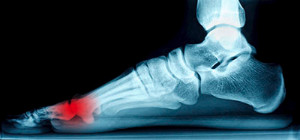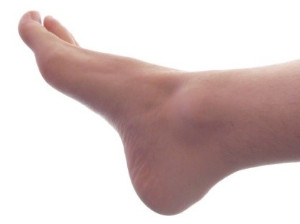Connect With Us
Blog
Items filtered by date: September 2017
Causes, Diagnosis, and Management for Sesamoiditis
 Sesamoiditis is a common condition among athletes in which inflammation occurs in the sesamoid bones in the feet. These bones, whose main function is to assist foot tendons in the movement of the big toe, can be injured either through athletic activity, such as dancing or running, or improper footwear like high heels. Symptoms include pain and inflammation, which can worsen with activities like walking. Diagnosis of sesamoiditis is conducted through bone scans or MRIs. The best way in which one can help manage sesamoiditis is by seeing a podiatrist, who may prescribe physical therapy, anti-inflammatory drugs, and rest to help the sesamoid bones to heal.
Sesamoiditis is a common condition among athletes in which inflammation occurs in the sesamoid bones in the feet. These bones, whose main function is to assist foot tendons in the movement of the big toe, can be injured either through athletic activity, such as dancing or running, or improper footwear like high heels. Symptoms include pain and inflammation, which can worsen with activities like walking. Diagnosis of sesamoiditis is conducted through bone scans or MRIs. The best way in which one can help manage sesamoiditis is by seeing a podiatrist, who may prescribe physical therapy, anti-inflammatory drugs, and rest to help the sesamoid bones to heal.
Sesamoiditis is an unpleasant foot condition characterized by pain in the balls of the feet. If you think you’re struggling with sesamoiditis, contact one of our podiatrists of Family Foot Care of Long Island. Our doctors will treat your condition thoroughly and effectively.
Sesamoiditis
Sesamoiditis is a condition of the foot that affects the ball of the foot. It is more common in younger people than it is in older people. It can also occur with people who have begun a new exercise program, since their bodies are adjusting to the new physical regimen. Pain may also be caused by the inflammation of tendons surrounding the bones. It is important to seek treatment in its early stages because if you ignore the pain, this condition can lead to more serious problems such as severe irritation and bone fractures.
Causes of Sesamoiditis
- Sudden increase in activity
- Increase in physically strenuous movement without a proper warm up or build up
- Foot structure: those who have smaller, bonier feet or those with a high arch may be more susceptible
Treatment for sesamoiditis is non-invasive and simple. Doctors may recommend a strict rest period where the patient forgoes most physical activity. This will help give the patient time to heal their feet through limited activity. For serious cases, it is best to speak with your doctor to determine a treatment option that will help your specific needs.
If you have any questions please feel free to contact our office located in Port Jefferson Station, NY . We offer the newest diagnostic and treatment technologies for all your foot and ankle needs.
Read more about SesamoiditisCauses, Diagnosis, and Management for Sesamoiditis
 Sesamoiditis is a common condition among athletes in which inflammation occurs in the sesamoid bones in the feet. These bones, whose main function is to assist foot tendons in the movement of the big toe, can be injured either through athletic activity, such as dancing or running, or improper footwear like high heels. Symptoms include pain and inflammation, which can worsen with activities like walking. Diagnosis of sesamoiditis is conducted through bone scans or MRIs. The best way in which one can help manage sesamoiditis is by seeing a podiatrist, who may prescribe physical therapy, anti-inflammatory drugs, and rest to help the sesamoid bones to heal.
Sesamoiditis is a common condition among athletes in which inflammation occurs in the sesamoid bones in the feet. These bones, whose main function is to assist foot tendons in the movement of the big toe, can be injured either through athletic activity, such as dancing or running, or improper footwear like high heels. Symptoms include pain and inflammation, which can worsen with activities like walking. Diagnosis of sesamoiditis is conducted through bone scans or MRIs. The best way in which one can help manage sesamoiditis is by seeing a podiatrist, who may prescribe physical therapy, anti-inflammatory drugs, and rest to help the sesamoid bones to heal.
Sesamoiditis is an unpleasant foot condition characterized by pain in the balls of the feet. If you think you’re struggling with sesamoiditis, contact one of our podiatrists of Family Foot Care of Long Island. Our doctors will treat your condition thoroughly and effectively.
Sesamoiditis
Sesamoiditis is a condition of the foot that affects the ball of the foot. It is more common in younger people than it is in older people. It can also occur with people who have begun a new exercise program, since their bodies are adjusting to the new physical regimen. Pain may also be caused by the inflammation of tendons surrounding the bones. It is important to seek treatment in its early stages because if you ignore the pain, this condition can lead to more serious problems such as severe irritation and bone fractures.
Causes of Sesamoiditis
- Sudden increase in activity
- Increase in physically strenuous movement without a proper warm up or build up
- Foot structure: those who have smaller, bonier feet or those with a high arch may be more susceptible
Treatment for sesamoiditis is non-invasive and simple. Doctors may recommend a strict rest period where the patient forgoes most physical activity. This will help give the patient time to heal their feet through limited activity. For serious cases, it is best to speak with your doctor to determine a treatment option that will help your specific needs.
If you have any questions please feel free to contact our office located in Port Jefferson Station, NY . We offer the newest diagnostic and treatment technologies for all your foot and ankle needs.
Are You Suffering from Tarsal Tunnel Syndrome?
 Tarsal tunnel syndrome, similar to carpal tunnel in the wrist, is caused by pressure on the tibial nerve in the tarsal tunnel. The tarsal tunnel, located in the ankle and the foot, contains tendons and the tibial nerve. This can create burning, aching, and other painful sensations. Causes of tarsal tunnel syndrome include athletic activity, exercise, and sometimes even flat feet. Tarsal tunnel syndrome can be diagnosed by a podiatrist, who can offer a number of treatments to relieve your pain. It is best to seek out a podiatrist soon, for the longer the nerve is under pressure, the more likely it will take longer and be harder to heal.
Tarsal tunnel syndrome, similar to carpal tunnel in the wrist, is caused by pressure on the tibial nerve in the tarsal tunnel. The tarsal tunnel, located in the ankle and the foot, contains tendons and the tibial nerve. This can create burning, aching, and other painful sensations. Causes of tarsal tunnel syndrome include athletic activity, exercise, and sometimes even flat feet. Tarsal tunnel syndrome can be diagnosed by a podiatrist, who can offer a number of treatments to relieve your pain. It is best to seek out a podiatrist soon, for the longer the nerve is under pressure, the more likely it will take longer and be harder to heal.
Tarsal tunnel syndrome can be very uncomfortable to live with. If you are experiencing tarsal tunnel syndrome, contact one of our podiatrists of Family Foot Care of Long Island. Our doctors can provide the care you need to keep you pain-free and on your feet.
Tarsal Tunnel Syndrome
Tarsal tunnel syndrome, which can also be called tibial nerve dysfunction, is an uncommon condition of misfiring peripheral nerves in the foot. The tibial nerve is the peripheral nerve in the leg responsible for sensation and movement of the foot and calf muscles. In tarsal tunnel syndrome, the tibial nerve is damaged, causing problems with movement and feeling in the foot of the affected leg.
Common Cause of Tarsal Tunnel Syndrome
- Involves pressure or an injury, direct pressure on the tibial nerve for an extended period of time, sometimes caused by other body structures close by or near the knee.
- Diseases that damage nerves, including diabetes, may cause tarsal tunnel syndrome.
- At times, tarsal tunnel syndrome can appear without an obvious cause in some cases.
The Effects of Tarsal Tunnel Syndrome
- Different sensations, an afflicted person may experience pain, tingling, burning or other unusual sensations in the foot of the affected leg.
- The foot muscles, toes and ankle become weaker, and curling your toes or flexing your foot can become difficult.
- If condition worsens, infections and ulcers may develop on the foot that is experiencing the syndrome.
A physical exam of the leg can help identify the presence of tarsal tunnel syndrome. Medical tests, such as a nerve biopsy, are also used to diagnose the condition. Patients may receive physical therapy and prescriptive medication. In extreme cases, some may require surgery.
If you have any questions please feel free to contact our office located in Port Jefferson Station, NY . We offer the newest diagnostic and treatment technologies for all your foot and ankle needs.
How to Avoid Long-Term Foot Issues
 You should always try to take care of your feet in order to reduce your chance of developing any long-term complications. One of the biggest keys toward preserving your foot health is to make sure you are wearing shoes that fit you properly with good arch support. Another crucial tip is to aid circulation in your feet by stretching, walking, or taking a warm foot bath. Lastly, visiting a podiatrist can help you if you are experiencing any sort of lingering pain or discomfort in your feet.
You should always try to take care of your feet in order to reduce your chance of developing any long-term complications. One of the biggest keys toward preserving your foot health is to make sure you are wearing shoes that fit you properly with good arch support. Another crucial tip is to aid circulation in your feet by stretching, walking, or taking a warm foot bath. Lastly, visiting a podiatrist can help you if you are experiencing any sort of lingering pain or discomfort in your feet.
Everyday foot care is very important to prevent infection and other foot ailments. If you need your feet checked, contact one of our podiatrists from Family Foot Care of Long Island. Our doctors can provide the care you need to keep you pain-free and on your feet.
Everyday Foot Care
Often, people take care of their bodies, face and hair more so than they do for their feet. But the feet are a very important aspect of our bodies, and one that we should pay more attention to. Without our feet, we would not be able to perform most daily tasks.
It is best to check your feet regularly to make sure there are no new bruises or cuts that you may not have noticed before. For dry feet, moisturizer can easily be a remedy and can be applied as often as necessary to the affected areas. Wearing shoes that fit well can also help you maintain good foot health, as well as making it easier to walk and do daily activities without the stress or pain of ill-fitting shoes, high heels, or even flip flops. Wearing clean socks with closed shoes is important to ensure that sweat and bacteria do not accumulate within the shoe. Clean socks help to prevent Athlete’s foot, fungi problems, bad odors, and can absorb sweat.
If you have any questions please feel free to contact our office located in Port Jefferson Station, NY . We offer the newest diagnostic and treatment technologies for all your foot and ankle needs.
Blog Archives
- October 2024
- September 2024
- August 2024
- July 2024
- June 2024
- May 2024
- April 2024
- March 2024
- February 2024
- January 2024
- December 2023
- November 2023
- October 2023
- September 2023
- August 2023
- July 2023
- June 2023
- May 2023
- April 2023
- March 2023
- February 2023
- January 2023
- December 2022
- November 2022
- October 2022
- September 2022
- August 2022
- July 2022
- June 2022
- May 2022
- April 2022
- March 2022
- February 2022
- January 2022
- December 2021
- November 2021
- October 2021
- September 2021
- August 2021
- July 2021
- June 2021
- May 2021
- April 2021
- March 2021
- February 2021
- January 2021
- December 2020
- November 2020
- October 2020
- September 2020
- August 2020
- July 2020
- June 2020
- May 2020
- April 2020
- March 2020
- February 2020
- January 2020
- December 2019
- November 2019
- October 2019
- September 2019
- August 2019
- July 2019
- June 2019
- May 2019
- April 2019
- March 2019
- February 2019
- January 2019
- December 2018
- November 2018
- October 2018
- September 2018
- August 2018
- July 2018
- June 2018
- May 2018
- April 2018
- March 2018
- February 2018
- January 2018
- December 2017
- November 2017
- October 2017
- September 2017
